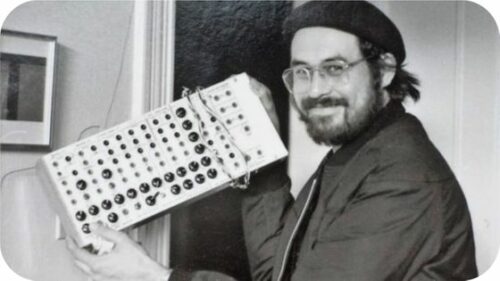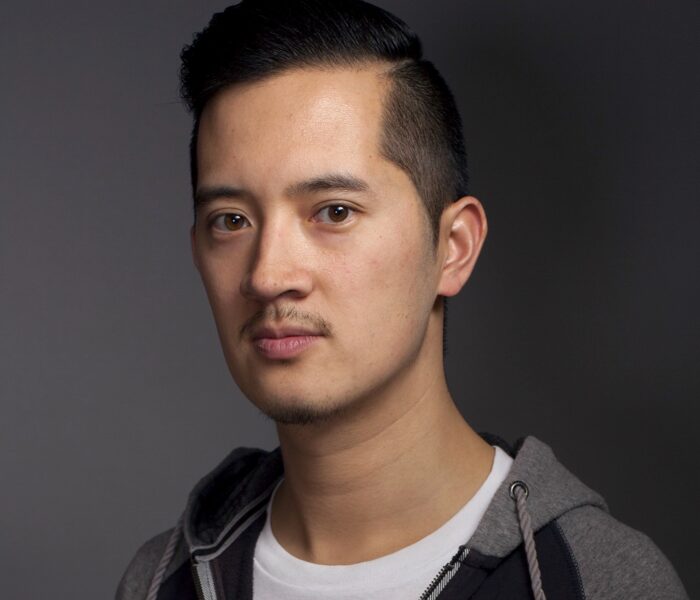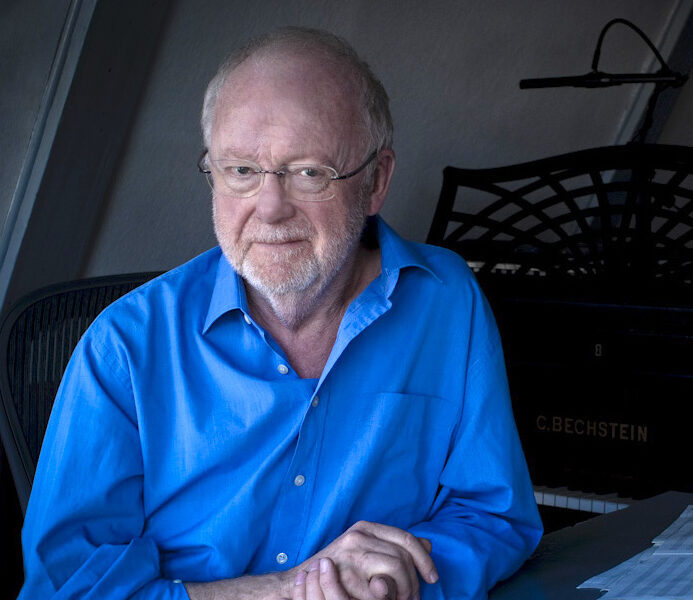Born in the Netherlands in 1979, Thomas Ankersmit is a sound artist and performer who divides his time between Berlin and Amsterdam. After training as a saxophonist, he turned to modular analogue synthesizers, which he approached as an autodidact. After having explored several of them, he settled on the Serge, a machine using a cable system that arrived on the market after the Buchla, Moog and Arp. Thomas Ankersmit has collaborated with Phill Niblock, Kevin Drumm, Valerio Tricoli, Tony Conrad and Jim O'Rourke.
A short history of Serge
The Serge system takes its name from its inventor, Serge Tcherepnin, a versatile composer and electronic designer born of Russian and Chinese parents who grew up in France. Self-taught in electronic design and circuitry, Serge enjoyed making "electronic junks" from the outset, composing with magnetic tape and using various electronic noisemakers cobbled together from transistor radios.
This was the early '70s, the heyday of Moog, ARP and Buchla synthesizers, which Serge felt could be improved. The latter were both expensive and bulky. A system with a decent number of functions could take up an entire wall in a small room! So Serge and his students Rich Or and Randy Cohen set to work. After coming up with a few ideas, they decided to build their own synthesizer.
Serge eventually left teaching to get more serious about building machines, using the early designs as a springboard. The Serge company was founded in 1975 in the West Hollywood area, then moved a few years later to Haight Street in North San Francisco. Serge has always retained his "simple bohemian" side, driven more by enthusiasm and a love of music than money and business acumen.
In 1992, he decided to move back to France. It was then that he sold the circuit designs he had been keeping secret to his long-time associate Rex Probe, who went on to found Sound Transform Systems. Total production figures now remain informal, but it is estimated that "hundreds" of Serge systems were produced in the early years.



Thomas Ankersmit in concert
With an obsession for the live concert and the resulting high degree of tension, Thomas Ankersmit shapes sound in real time, through the creative misuse of the tools he uses and a careful attention to the space in which the sounds resonate: precision, clarity, purity of signal and sophistication of control. There's something wild, an appetite for noise, chaos and turbulence in Ankersmit's sound universe. " It's a very open system so everything can be connected to something else and everything can do feedback for example," he stresses. " I make music with the by-products of electronic sounds, which are often considered errors, feedbacks, parasites, distortions, all sorts of strange things that we usually reject. Synthesis processes create wonderful electronic, tactile and organic noises. I focus a lot on manual interaction, on having several simultaneous sound streams and being able to combine them dynamically. I have a custom-built 8X8 matrix that I use as a master controller; it's almost the extension of a DJ mixer in a way, with which I can make cuts, crossfades between multiple layers of sound. I don't do sophisticated voltages or sequencing, I work mainly manually. When I play live, all the sounds I use come from the Serge; half are produced live, the other half come from Serge samples. So in concert I trigger all sorts of sound fragments in Max/MSP1 using a simple little Midi controller. All the textures and sounds come from the Serge, whether prepared in the studio or played live. And I've already transformed the pre-recorded fragments through the Serge again by filtering, frequency transpositions, ring modulations, panning and strange processes using very fast random modulations that diffract the sounds."
After the release of an album in memory of Dick Raajmakers2in 2018, Thomas Ankersmit decided to pay tribute, 10 years after his death, to the work of the American composer Maryanne Amacher, a pioneer of sound architecture and in particular at the origin of the discovery of what she called "psycho-acoustic phenomena" (sounds produced by the listener's ears when provoked with a certain stimulus). Behind this title, Perceptual Geography, borrowed from an article by Maryanne Amacher published in 1979, Thomas Ankersmit proposes a re-reading of Maryanne Amacher's work and her three-dimensional approach to sound.
In this piece, Ankersmit explores different 'modalities' of listening: not only what sounds are heard and when, but also how and where the sounds are perceived (in the room, in the body, in the head, far away, near). Otoacoustic emissions (sounds emanating from inside the head, generated by the ears themselves) play an important role. When the volume is high, the signal goes beyond the speakers and starts to trigger additional sounds in the listener's head, sounds that are not present in the recorded music. Holding the ears with the hands and making slight movements of the head also help to bring these tones to life. Maryanne Amacher was the first artist to systematically explore the musical use of these phenomena, which she calls "ear tones".
The sonic stimuli of the ear tones mix with and emerge from these textures. Once or twice the music seems to freeze completely in time, but a slight movement of the listener's head reveals changes.
The disc is accompanied by a long conversation between Thomas Ankersmit and Serge Tcherepnin, creator of the Serge Modular and Amacher's friend and collaborator.
Michèle Tosi
In concert:
- at the November Music Festival, Den Bosh, November 2, 2023
- at the Ocean of Sounds Festival, Leuven, November 17, 2023
1. Max/MSP is a music software package for sound synthesis, analysis, recording, and control of MIDI instruments. It was developed by Ircam in the 1980s
2. Born in Maastricht in 1930 and died in 2012, Dick Raaymaker was a Dutch composer, dramatist and music theorist, a pioneer of electronic music and tape experiments: a multimedia artist whose research and activities in the field of sound aimed to bring together art and technology.
3. Under the exact name "Psychoacoustic Phenomena in Musical Composition - Some Features of a "Perceptual Geography".
4 This is a digital version only, as the process of producing the ear tones cannot be adequately transferred to vinyl.
Photo © Quentin Chevrier



)



